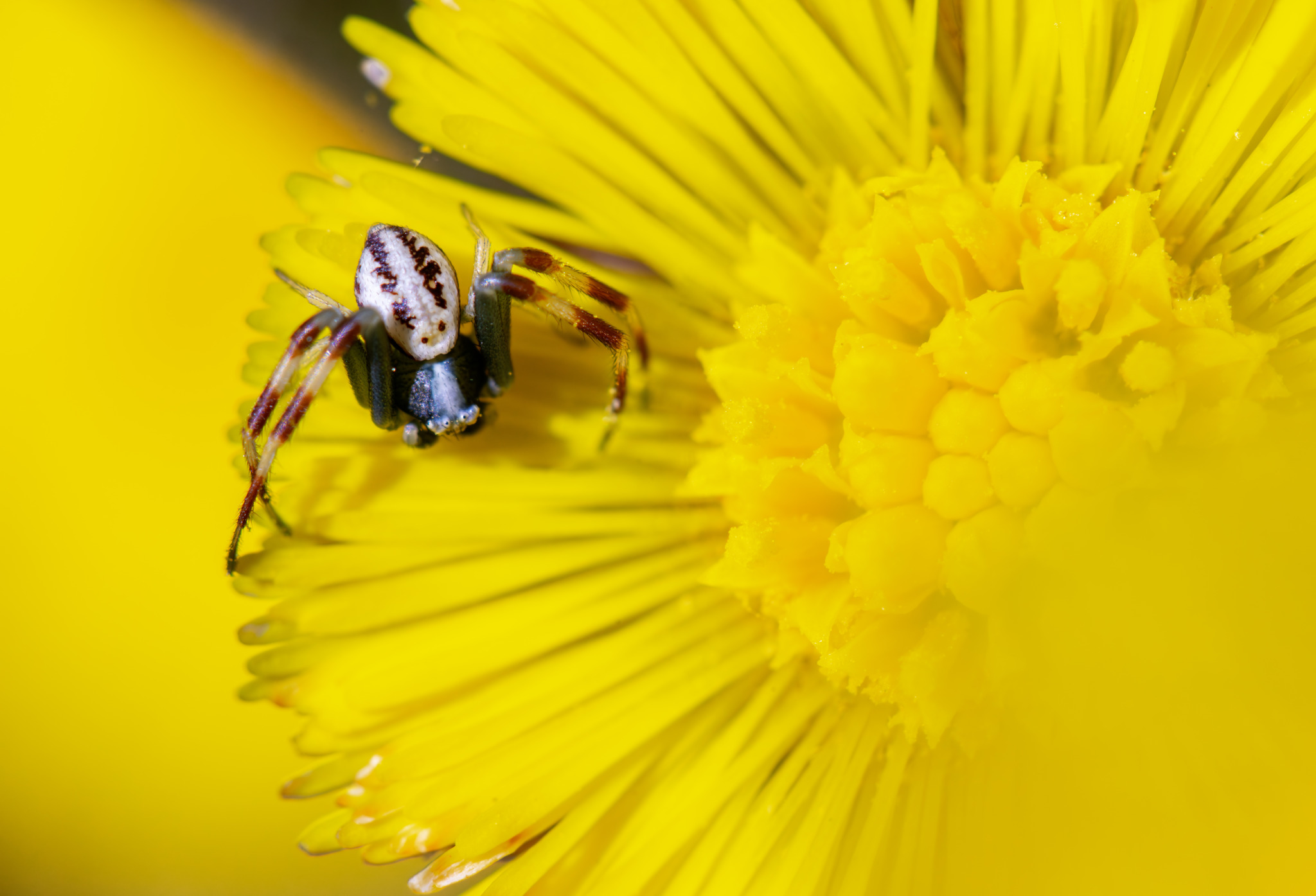The Goldenrod crab spider (Misumena vatia) is a species of crab spider belonging to the family Thomisidae. Here are some key features and characteristics of the Goldenrod crab spider:
- Appearance: Goldenrod crab spiders are small spiders with a flattened body and long, slender legs. They have a variable coloration that can range from white to yellow or green, allowing them to blend in with the flowers they inhabit. They often have markings on their cephalothorax that resemble a crab’s eyes.
- Habitat: Goldenrod crab spiders are commonly found in meadows, fields, gardens, and other areas with abundant vegetation, particularly where flowering plants are present. They are often seen resting on flowers, where they wait to ambush their prey.
- Camouflage: Goldenrod crab spiders are masters of camouflage, using their coloration to blend in with the petals of flowers such as goldenrod, daisies, and other yellow or white blooms. They remain motionless on the flower, waiting for unsuspecting insects to come within striking distance.
- Predatory Behavior: Goldenrod crab spiders are ambush predators that primarily prey on insects, especially pollinators such as bees, butterflies, and flies. They do not build webs to catch their prey but instead rely on stealth and agility to capture insects that come within reach. They have strong forelegs equipped with sharp spines, which they use to grasp and immobilize their prey.
- Reproduction: Like other spiders, Goldenrod crab spiders reproduce sexually. Males typically initiate courtship by approaching females cautiously and engaging in elaborate mating rituals, which may involve tactile and vibratory signals. After mating, females lay eggs in silken egg sacs, which they guard until the spiderlings hatch.
- Defense Mechanisms: Goldenrod crab spiders rely primarily on their camouflage to avoid detection by predators. However, if threatened, they may resort to defensive behaviors such as fleeing or biting. Their venom is not considered harmful to humans and is primarily used to subdue their insect prey.
- Ecological Role: Goldenrod crab spiders play an important ecological role as predators of insect pests and pollinators. By preying on insects that visit flowers, they help regulate insect populations and contribute to the overall health of ecosystems.
Overall, the Goldenrod crab spider is a fascinating and beneficial arachnid species that showcases remarkable adaptations for hunting and survival in floral environments.
Views: 17
Subscribe to the newsletter:
